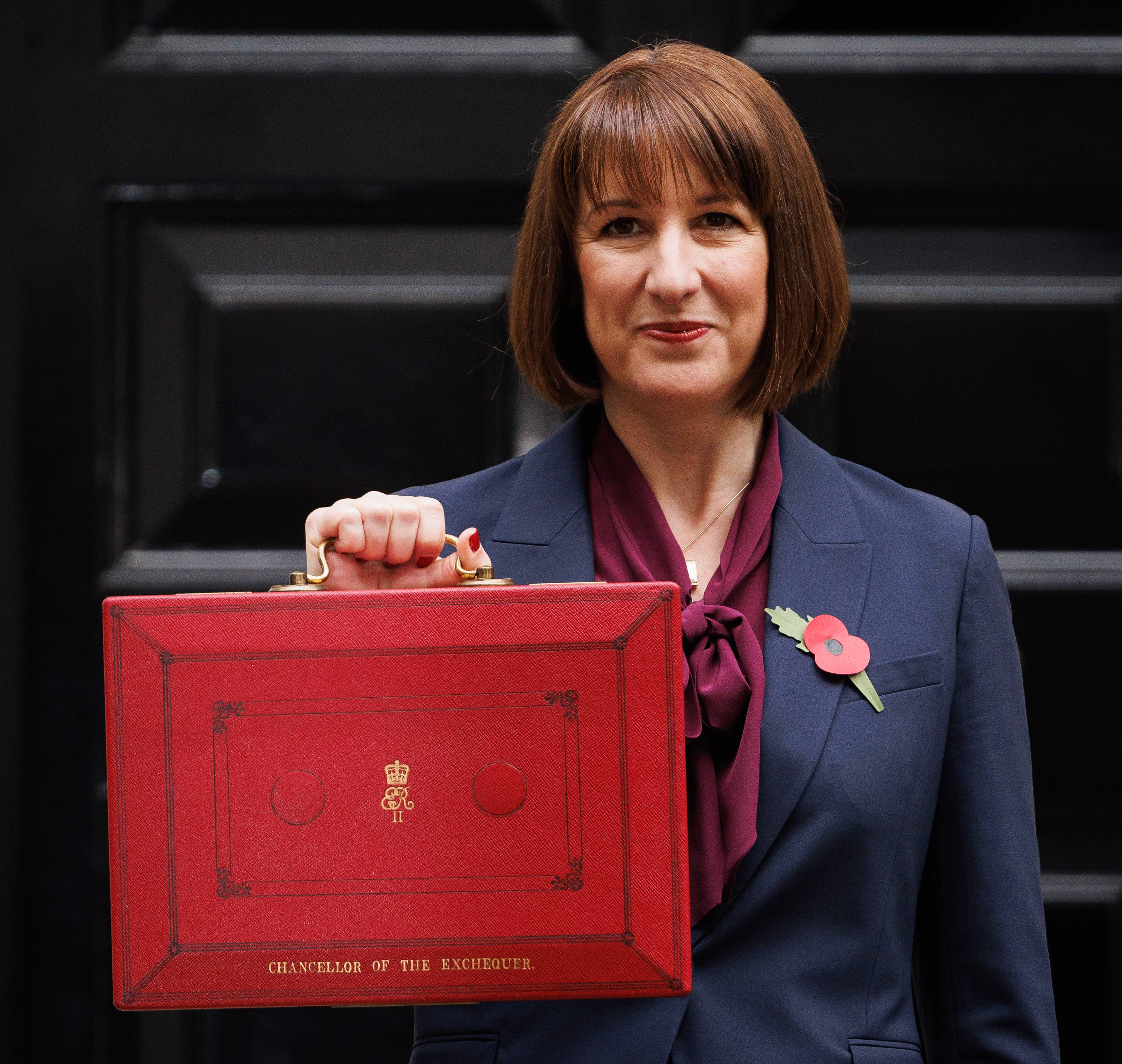Review of the week: The bank of mum and dad
UK central bankers fall into an age-old parenting trap while talking to investors. Also, we look at the differences between official statistics and new ‘real-time’ series.

Article last updated 30 September 2025.
Central banking can be a lot like parenting. You’re the authority figure, you tend to do a lot of explaining and the listeners often don’t like what they hear.
It’s a classic: Little Timmy doesn’t like the answer he got from Mum about whether rates can stop rising, so he scuttles off to see what Dad has to say on the subject. If Dad isn’t already on the same page as Mum – if the answer differs – confusion reigns. Little Timmy will cause mayhem and the parents are in for a long day.
You’ve probably realised by now that Little Timmy is a metaphor for investors in our tale; Mum and Dad would be Bank of England (BoE) Governor Andrew Bailey and Chief Economist Huw Pill respectively.
Last week, Bailey gave a speech seemingly downplaying the need for more UK interest rate hikes to tame inflation. Prices are still rising at more than 10% a year and the government’s energy price guarantee is set to jump 20% next month, taking the average annual household bill to £3,000. Yet compared with the 95% rise in the cost of power in the year to April 2022, that large deceleration in the most recent year means energy prices will have a much-lessened effect on headline inflation this time around, Bailey noted. And if power prices continue to fall from here, it should start to push inflation sharply lower as the year progresses.
European wholesale power prices have fallen substantially from last year’s peak, but because power retailers buy most of the energy they expect to need many months in advance it takes a while for those lower prices to feed through to their customers. The electricity and gas retailers who didn’t do that very well went bankrupt in droves in the early stages of the energy crisis because they had agreed low, long-term fixed prices with their customers yet had to supply that energy by purchasing it on the spot market for much higher prices. (Selling widgets for a fraction of what you paid for them is a formula for bankruptcy whichever industry you’re in.) It’s taken a while, but – as long as there isn’t another shock – once power costs start to fall they should plummet pretty quickly for UK households and businesses over the rest of 2023.
Bailey cautioned “against suggesting either that we are done with increasing Bank Rate, or that we will inevitably need to do more”, but in the round Little Timmy heard that the BoE thought no more interest rates were likely for now. Mainly, that was because Bailey said the BoE had shifted from its previous stance that “further increases in Bank Rate would be required”. At first, this pushed the pound lower and lowered the yield of the benchmark 10-year UK government bond as investors bought into the idea that UK interest rates may not rise to the 4.75% or so that markets generally expect.
But then Little Timmy got to thinking. Was this actually a ‘maybe’ dressed up as a ‘yes’? Classic Mum. Bailey had skipped over food inflation running at 17% and barely doffed his cap at the ever-present “tight labour market”, but they’re quite big deals, aren’t they? The moves in the pound and bond yields quickly reversed themselves.
It was time to have a chat with Dad. Sure enough, Chief Economist Pill had a different view. During a business conference in Wales he focused on the UK’s better-than-expected economic performance in recent months, something that is inflationary. This was pushing pay inflation “slightly to the upside”, albeit this may be set to dip again in coming months, Pill said.
What to make of it all? In the end, Little Timmy took greater than 10% inflation, higher economic growth, solid wage rises and a generally tighter global outlook for interest rates at face value. UK 10-year government bond yields are still bumping around between 3.80% and 4.00% while the BoE tries to coax them lower.
The danger here is that this sort of inconsistency risks undermining a central bank’s credibility, which could add an ‘uncertainty premium’ to the cost of borrowing. We believe the BoE is almost done raising rates and is likely to pause ahead of the US and European central banks. But the outlook for UK inflation and interest rates is more uncertain than elsewhere, so there’s a greater risk that UK inflation stays higher for longer. Investors must bear in mind not only the most likely outcome, but the spread of alternative outcomes. This spread is wide in the UK.
|
1 week |
3 months |
6 months |
1 year |
|
|
FTSE All-Share |
1.1% |
5.6% |
10.0% |
11.9% |
|
FTSE 100 |
1.1% |
6.0% |
10.6% |
14.2% |
|
FTSE 250 |
1.2% |
3.4% |
7.0% |
2.2% |
|
FTSE SmallCap |
0.9% |
4.6% |
5.1% |
0.6% |
|
S&P 500 |
1.6% |
1.8% |
0.6% |
5.0% |
|
Euro Stoxx |
2.6% |
11.5% |
20.9% |
22.3% |
|
Topix |
1.3% |
5.0% |
5.3% |
4.1% |
|
Shanghai SE |
2.2% |
9.7% |
1.1% |
-2.5% |
|
FTSE Emerging |
1.5% |
3.7% |
-1.7% |
-1.7% |
Source: EIKON, data sterling total return to 3 March
| These figures refer to past performance, which isn’t a reliable indicator of future returns. The value of investments and the income from them may go down as well as up and you may not get back what you originally invested. |
Parsing data
The path of inflation has been the most important factor for investors for many moons now. Yet there’s a lot of time to kill between the handful of main data releases that offer coordinates for this most crucial lodestar.
There’s obviously the headline inflation data itself, including the core numbers that strip out energy and food prices that obscure what’s happening with the general price level of goods and services. Then there’s the Producer Price Index (PPI), which looks at pricing pressures for suppliers and wholesalers. Retail sales offer insights on households’ propensities to shop it up or rein in their spending, something that can foreshadow accelerations or decelerations in inflation. There are unemployment numbers, new-job figures and average pay measures too, along with a few more.
These all tend to come in monthly, giving economists a lot of time for pondering and second-guessing. Everyone is trying to get an edge on the direction of travel, so there can be a lot of casting round for information that accurately predicts the direction of travel. Inflation is the Big Unknown at the moment, but back in the early days of the pandemic the focus was on the speed of recovery in activity – the number of people leaving the house, how many cars were on the roads, that sort of thing. In the digital age, it’s quicker and easier to count and report on an all manner of stuff than it was when governments came up with their monthly statistics in the mid to late 20th Century.
The amount of ‘real-time data’ out there on everything from footfall on the high street, to the number of vehicles on the road, punters on the Underground or the occupancy rates of carparks is huge and growing every day. You’ve likely started to hear them referenced more and more by news reporters and commentators. Many investors make use of this information in an attempt to get that edge – to get ahead of the competition. We’re among them. Yet it’s important to keep in mind their limitations and understand how they are best used.
Real-time datasets tend to have short histories because the technology just wasn’t prevalent enough a decade or so ago to make these counts possible. This means you don’t have any past economic cycles to compare today’s movements against. You may know that footfall has jumped considerably in the past two weeks, say, but you have no idea of how that quantum of movement affected spending in shops, economic growth or inflation when it happened in past years.
Not only that, but many of these real-time datasets are put together by previously unknown operators and the methodologies can be opaque. How do you know that the data isn’t blighted by some poor monitoring, or simply made up!
Traditional economic statistics are heavily reliant on surveys and phone calls, which are pretty antiquated and potentially misleading in some areas where the times have well and truly moved on. For instance, how skewed are UK household telephone interviews likely to be, given that only 75-80% of homes (and falling) still have a landline? What about when you realise that only 65% or so of urban households have a phone, compared with about 85% of rural homes? Such drawbacks need to be kept in mind. However, they are balanced out by the sheer longevity of these statistics’ lives. There may be short-term problems in these official numbers, but you have a robust and comparable set of data going back decades, which gives you a steer on its knock-on effects for the future. The Office for National Statistics is constantly adding real-time data into their work, but they must do so carefully so as not to jettison the comparability with their distinguished histories!
In the US, for example, inflation is likely lower than stated by the official data because of the old-fashioned way of gathering housing costs (a much bigger feature of US CPI compared to UK CPI). Real-time data from internet sites aggregating houses available to buy or rent tells us shelter costs have fallen sharply, yet that slump is still to appear in official data. Still, that doesn’t mean we should all breathe easier – this fact is well known! It’s why the US Federal Reserve is so fixated on a measure of service-sector inflation that excludes housing.
No data is perfect. Like everything, you need to take a broad view, trying to control your assumptions and understanding what you’re looking at. A mixture of old-fashioned, lagging, but venerable and reliable government statistics can be complemented very nicely by some well-researched and credible new-age information brought to you in real time. But try not to be overawed by some eye-catching short-term data. Context is everything.
If you have any questions or comments, or if there’s anything you would like to see covered here, please get in touch by emailing review@rathbones.com. We’d love to hear from you.
View the PDF version of Review of the week here.
Bonds
UK 10-Year yield @ 3.83%
US 10-Year yield @ 3.96%
Germany 10-Year yield @ 2.68%
Italy 10-Year yield @ 4.52%
Spain 10-Year yield @ 3.70%
Central bank interest rates
UK: 4.0%
US: 4.50%-4.75%
Europe: 3.00%
Japan: -0.10%
|
Economic data and companies reporting for week commencing 6 March |
|
Mon 6 Mar UK: Construction PMI Full-year results: Clarkson, Batm Advanced Communications, Bellevue Health, Ros Agro, Power Metal |
|
Tue 7 Mar UK: BRC Retail Sales Monitor Full-year results: Direct Line, Just Group, IWG, Keller, Fresnillo, H&T Group, Elementis, Foxtons, Greggs, Johnson Service, STV Group, Reach |
|
Wed 8 Mar US: MBA 30-Year Mortgage Rate, MBA Mortgage Applications, ADP Employment Change, Balance of Trade, Exports, Imports, Fed Beige Book Full-year results: Hill & Smith, Legal & General, Vistry Group, Tt Electronics, Quilter, CLS Holdings, Tritax Big Box, Hiscox, Ibstock, Bakkavor, Spirent, Tullow Oil, T Clarke, Somero Enterprise, Breedon, Headlam |
|
Thu 9 Mar US: Continuing Jobless Claims, Initial Jobless Claims Full-year results: Informa, Spirax-Sarco, Aviva, Page Group, M&G, ConvaTec, Robert Walters, Entain, Harbour Energy, Network International, Forterra, Oakley, Franchise Brand, Digital 9, Wheaton Precious Metals |
|
Fri 10 Mar UK: GDP Rate, Balance of Trade, Construction Output, Goods/Trade Balance, Goods/Trade Balance non-EU, Industrial Production, Manufacturing Production, NIESR Monthly GDP Tracker Interim results: Mineral & Financial Investments |



